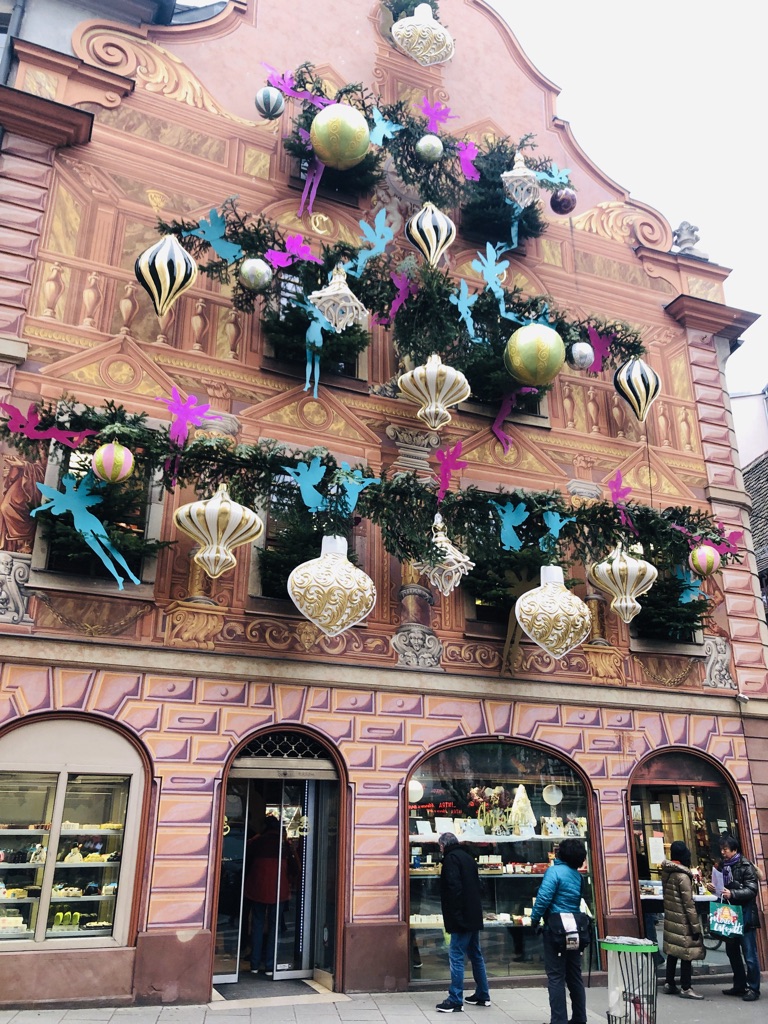
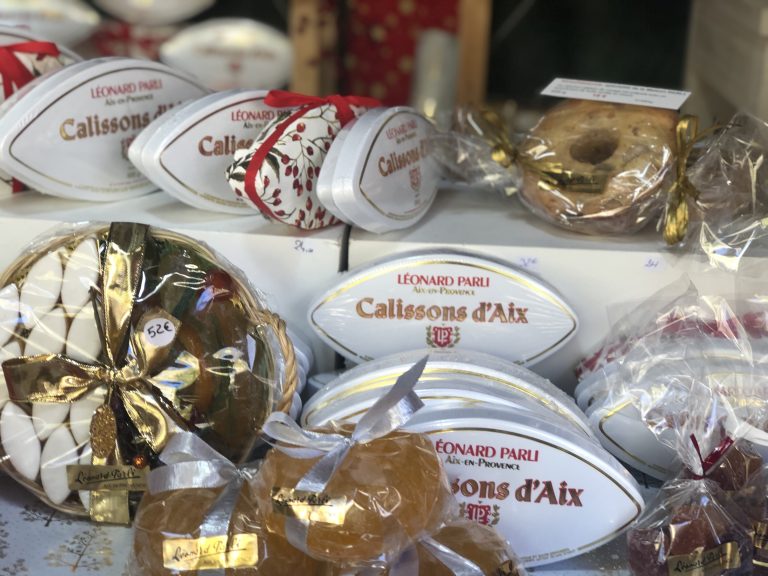


When I think of Christmas in France, my mind always wanders south to Provence. Not so much the glitzy Cote d’Azur (although it is pretty great!) but the olive grove – lavender field – chalky cliff – charming villages – Provence. The place where santonniers handcraft miniatures of each townsperson and animal to bear witness at the birth of baby Jesus in the crèche (nativity scene).
The Provençal Crèche: A Nativity Scene Like No Other
“Provençaux, faisons donc la crèche: c’est la plus belle de nos traditions provençales” – R. P. Vial
The tradition of la crèche in Provence, and particularly in Marseille, dates back to the 17th century. There are “church” nativity scenes as well as the ones families put in their homes. The oldest known and still preserved today is in Saint Maximin.




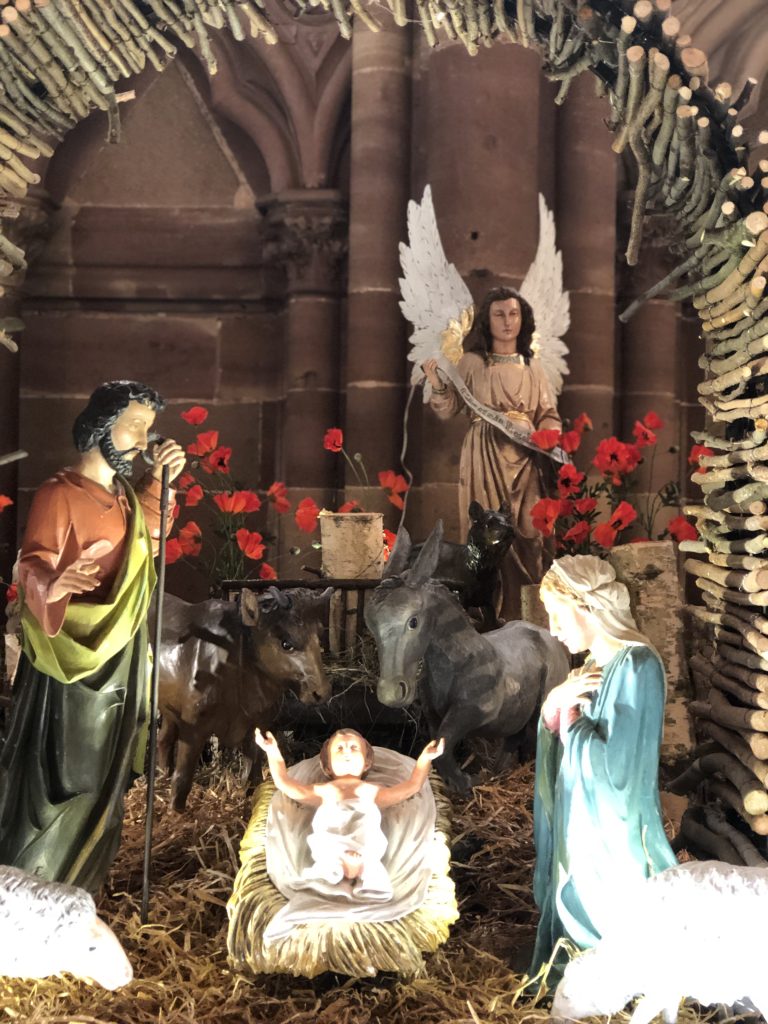
There are no hard and fast rules to creating a crèche – let your creativity flow! They are made up of 3 parts: the Sainte Famille and the stable, the countryside filled with townspeople and animals, and the backdrop – usually featuring a star and the night sky or the countryside in the distance. It has become a collectors paradise to add new features every year.
I started my collection about 20 years ago from a santonnier in the small village of Séguret. Last year I was completely overwhelmed with all of the stalls of different santons from which to choose at the Christmas market in Aix-en-Provence. I have to say it is a joy every year to unwrap each townsperson, goat, fountain and lavender tree, and reassemble the scene for the season. The next time you are in Provence, be inspired at one of the Santon museums in Les Baux-de-Provence, Fontaine de Vaucluse or Marseille. There are also many shops and ateliers where you can start your own collection.
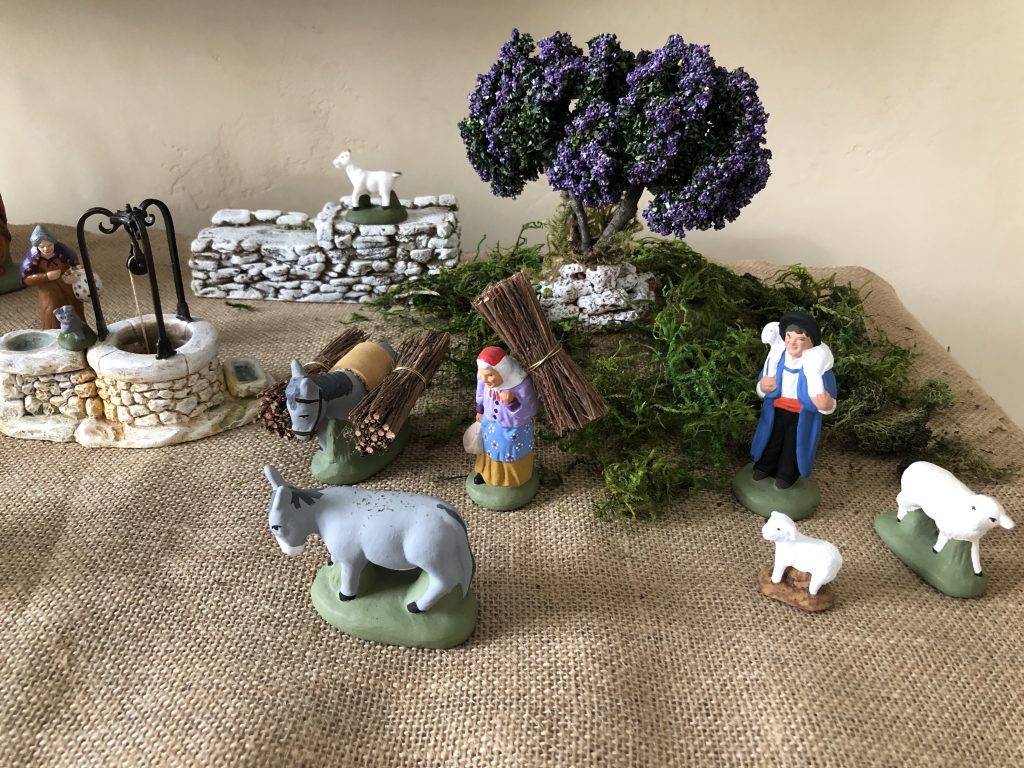

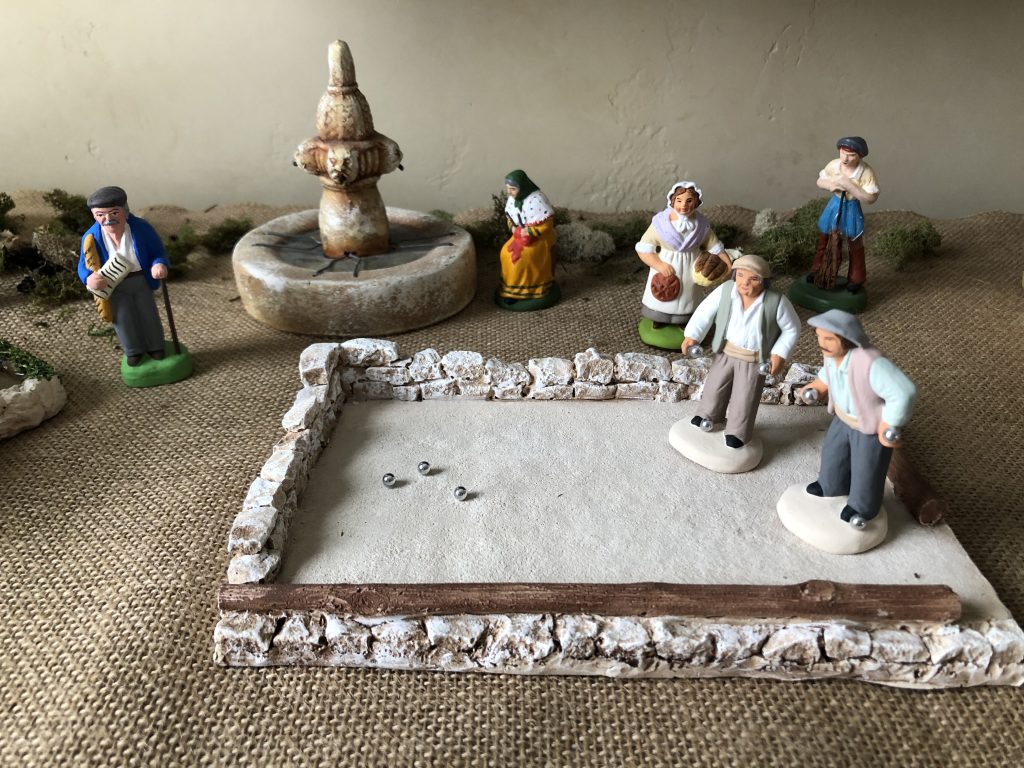
If you do start your own collection in France, be sure to note the size of your figurines. They can vary from 4-5 cm to 10-12 cm! Your 8cm baker may feel a bit sheepish around a 12 cm farmer! (Here are some photos of my crèche)
The Poetic Crèche
Paysage de crèche
La crèche, si modest, est l’image du ciel.
Le loup n’y trouble point la paix des bergeries;
Et les aïeuls, courbés sous leurs vertus fleuries,
Dans leurs coeurs résignés et doux, n’ont pas de fiel.
Et qu’y voit-on? La ferme et ses ruches à miel,
Le puits ou le soleil met des joailleries,
Le pont, sur l’eau d’argent, qui couple les prairies,
Des amoureux conduits par l’ange Gabriel.
Là, le pêcheur toujours est content de sa pêche,
Et le poisson qu’il prend, il le rend à l’eau fraîche.
Là, le chasseur tue un gibier qui ne meurt pas.
Fouillez rues et faubourgs et la colline entière,
Cherchez partout, l’oeil grand ouvert, à menus pas,
Vous ne découvririez jamais un cimetière.
Elzeard ROUGIER
Les 13 Desserts de Noël
Why have one dessert when you can have THIRTEEN?? This custom is one of the most cherished traditions in Provence. The Christmas Eve dinner (le gros souper) before Midnight Mass has 13 desserts, honoring the number of people around the table at the Last Supper – Jesus and his 12 Disciples. These desserts, really small bites, are placed at the table on Christmas Eve and remain there for 3 days so guests have a chance to sample each one.
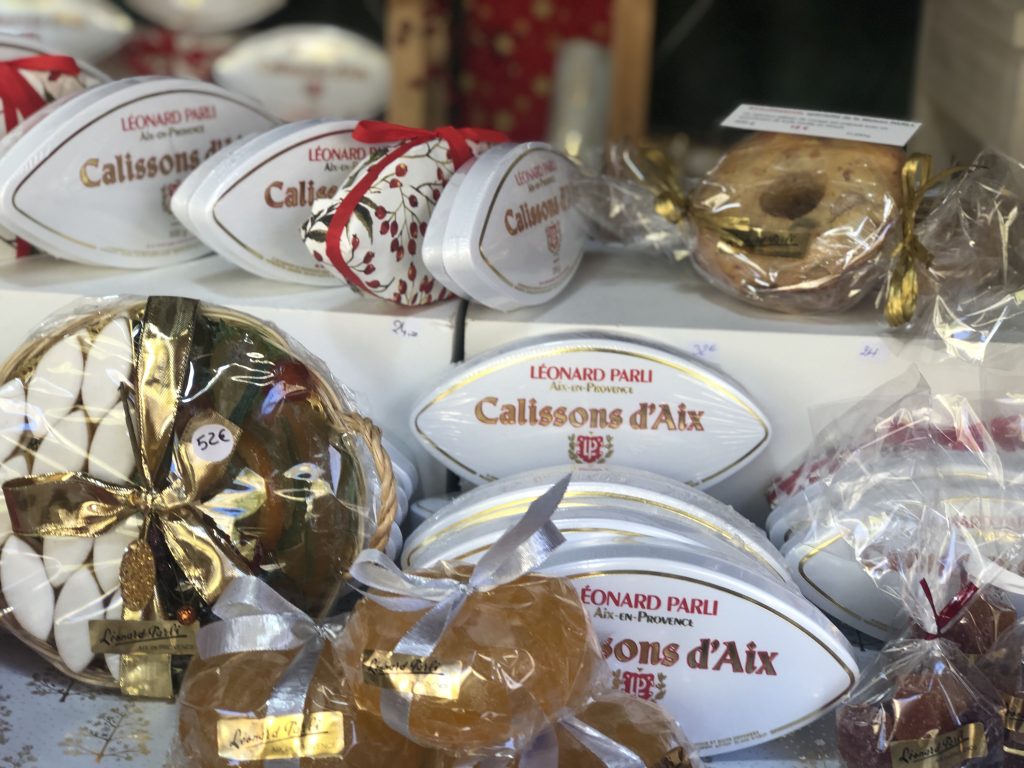
As with any tradition, there will be some variations between towns and families. Here is the basic list:
The first four are known as the “four beggars” (les quatre mediants), representing the four monastic orders.
- Raisins (Dominicans)
- Walnuts or Hazelnuts (Augustinians)
- Dried Figs (Franciscans)
- Almonds (Carmelites)
- Dates (representing the region where Christ lived)
- Calissons d’Aix – a candy made with almond paste and melon
- Nougat Blanc (white nougat with pistachios, honey and almonds) representing “good”
- Nougat Noir (black nougat) representing “evil”
- Pompe à l’huile – a brioche-like bread with orange water and olive oil
- Oranges (clementines or tangerines)
- Quince paste
- Winter Melon (or other fruit)
- bûche de Noël (Yule log ) or Oreillettes (thin, light waffles)
Although it may be hard to find some of these items in the US, I did adopt this tradition a few years ago. I figure if the French can’t all agree on the list, a few substitutions can’t hurt. And you can always try your own hand at making Pompe à l’huile, with the added bonus of the fabulous aroma!
Pompe à l’huile
500 g flour
30g yeast
100g sugar
½ tsp salt
3 tbsp orange flower water (use more or less depending on your tastes)
125ml olive oil
1 lemon zest
1 orange zest
Prepare the leaven and dough:
Dilute the yeast in warm water with ½ tsp sugar and let stand 15 minutes.
Put the flour and sugar in another bowl. Add oil, orange flower water, the zests and mix together. Add the yeast. Knead well.
Roll the dough into a ball, put it into a bowl covered by a dish cloth and let it rise for 6 hours in a warm place.
Preheat the oven at 180°C, 550°F.
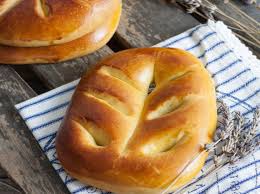
Divide the pastry into two parts and roll each out into two discs 1 cm thick.
Using a knife, make incisions in the surface of the pastry disk. Brush with egg yolk.
Bake for 15 minutes or until golden and the size has increased.
Makes 2 cakes
Recipe from www.avignon-et-provence.com
How to Enjoy (or Make) a Traditional Bûche de Noël
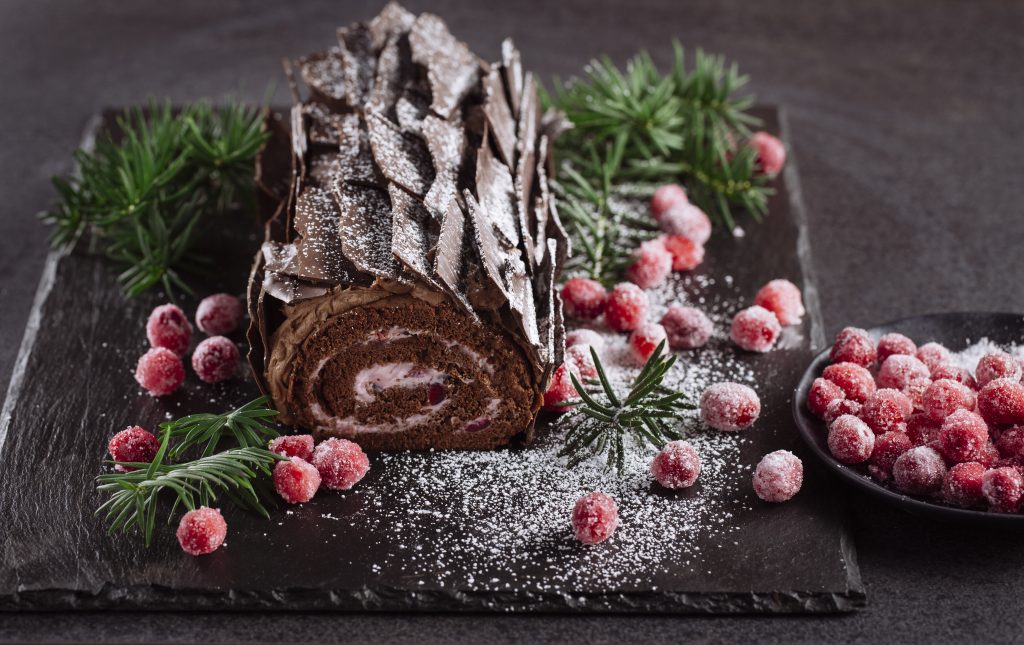
No French Christmas celebration is complete without a bûche de Noël, the classic Yule Log cake. Beautiful, delicious, and surprisingly doable at home, this rolled sponge cake is typically filled with buttercream and decorated to look like a rustic log—complete with “bark” and dusted snow.
If you’ve never tried baking one, don’t be intimidated. The trick is to roll the sponge cake while it’s still warm and let it cool in that shape. The rest is just frosting and fun.
Bûche de Noël (Yule Log Cake)
Serves: 8–10
Prep Time: 45 minutes
Bake Time: 10–12 minutes
Chill Time: 1 hour
For the sponge cake:
- 4 large eggs (room temperature)
- 1/2 cup (100g) granulated sugar
- 1 tsp vanilla extract
- 1/2 cup (60g) all-purpose flour
- 1/4 tsp salt
- Powdered sugar (for dusting towel)
For the chocolate buttercream:
- 1/2 cup (115g) unsalted butter, softened
- 1 1/2 cups (180g) powdered sugar
- 1/4 cup (25g) unsweetened cocoa powder
- 2–3 tbsp heavy cream or milk
- 1 tsp vanilla extract
- Pinch of salt
Instructions:
1. Make the sponge cake:
Preheat the oven to 375°F (190°C). Line a 10×15” jelly roll pan with parchment paper.
In a large bowl, beat the eggs and sugar until light, pale, and tripled in volume (about 5–7 minutes). Gently fold in the vanilla, then sift in the flour and salt. Mix just until combined.
Pour the batter into the prepared pan and spread evenly. Bake for 10–12 minutes, or until golden and springy to the touch.
2. Roll the cake:
Dust a clean kitchen towel with powdered sugar. While the cake is still warm, invert it onto the towel, peel off the parchment, and gently roll the cake with the towel (starting from the short end). Let it cool completely while rolled up.
3. Make the buttercream:
Beat the softened butter until smooth. Add powdered sugar, cocoa powder, vanilla, salt, and 2 tablespoons of cream. Beat until fluffy and spreadable, adding another tablespoon of cream if needed.
4. Assemble and decorate:
Unroll the cooled cake. Spread with about half the buttercream, then re-roll (without the towel). Place seam-side down on a serving platter.
Frost the outside with remaining buttercream and use a fork to create a bark-like texture. Dust with powdered sugar for snow, and decorate with rosemary sprigs, sugared cranberries, or chocolate shavings.
This cake is not just dessert—it’s a centerpiece, a tradition, and a little moment of joy. Whether you make your own or pick one up from a local French bakery, let it be a sweet ending to your Provençal-inspired Christmas.
Traditions to Treasure
There’s something quietly magical about Provençal traditions. They’re simple but rich with meaning—just like the region itself. Whether you light a candle for Mary, add a new santon to your crèche, or nibble on nougat while the bûche bakes, you’re keeping these stories alive. And that’s something worth celebrating.
Holiday Traditions and Christmas Markets in France
France Travel Planning
with Traci Parent
Your Personalized France Trip
Travel Smart. Stress Less. Enjoy More
- Hand-picked Stays & Routes
- Village Markets & Secret Spots
- Local Tips - Expert Help




